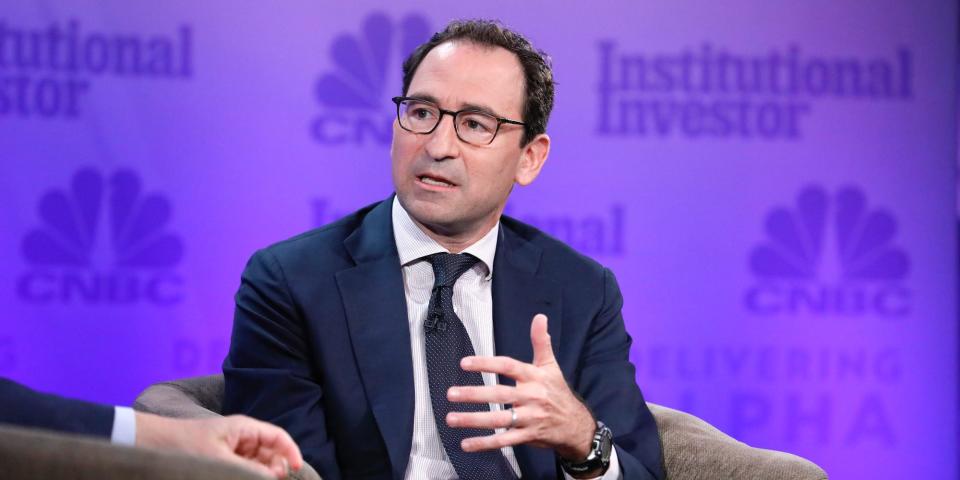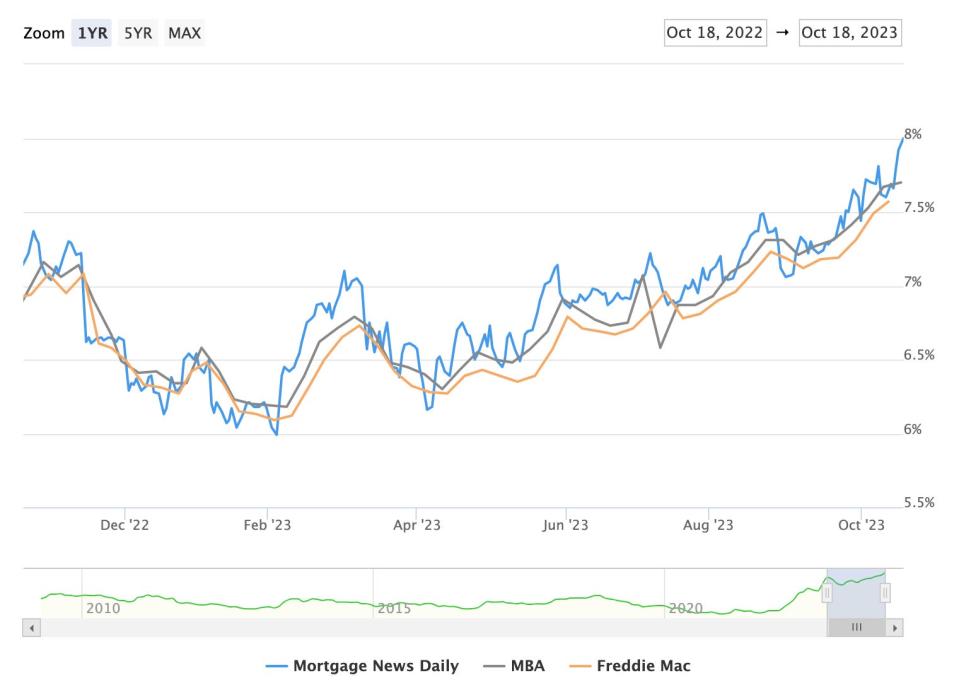Americans are about to feel the impact of soaring bond yields, Blackstone president says

Consumers are about to feel the impact of soaring bond yields, Blackstone president Jonathan Gray told the FT.
The yield on the 10-year US Treasury continued to rise on Thursday, edging closer to 5%.
Higher bond yields are raising borrowing costs all over the economy, from mortgages to personal loans.
American consumers are about to feel the sting of soaring bond yields, Blackstone president Jonathan Gray said.
Bond yields, which impact borrowing costs for all kinds of loan products, moved higher this week as investors fretted over higher-for-longer interest rates. After notching a 16-year-record earlier this month, the yield on the 10-year Treasury bond continued to surge on Thursday, rising to 4.958%.
"When 30-year mortgages and car loans cost you 8 percent it will impact consumer behavior," Gray said in an interview with Financial Times on Thursday. "Growth has been remarkably resilient, but if you keep policy this tight, this long, invariably you will cause the economy to slow down."
In some corners of the economy, rising yields and higher borrowing costs have already been acutely felt. Rates on the 30-year fixed mortgage just notched 8% this week for the first time since 2000, with the steady rise to that level in the past year putting the US housing market in a state of paralysis and bringing transaction volume to a 13-year low.

Meanwhile, the rate on 24-month personal loans at commercial banks notched 12% in August, the highest borrowing cost since 2007, Federal Reserve data shows.

That's bad news for US consumers, who have been a pillar of economic strength in the last 18 months of monetary policy tightening by the Federal Reserve.
Consumers' resilient spending spree could soon grind to a halt though amid rising debt costs.
Households may have already run out of excess savings last quarter, according to the San Francisco Fed, and student loan payments for 43 million borrowers just resumed at the start of October. Around 34% of borrowers say they won't be able to make their payments, according to a recent Morgan Stanley survey.
Read the original article on Business Insider
